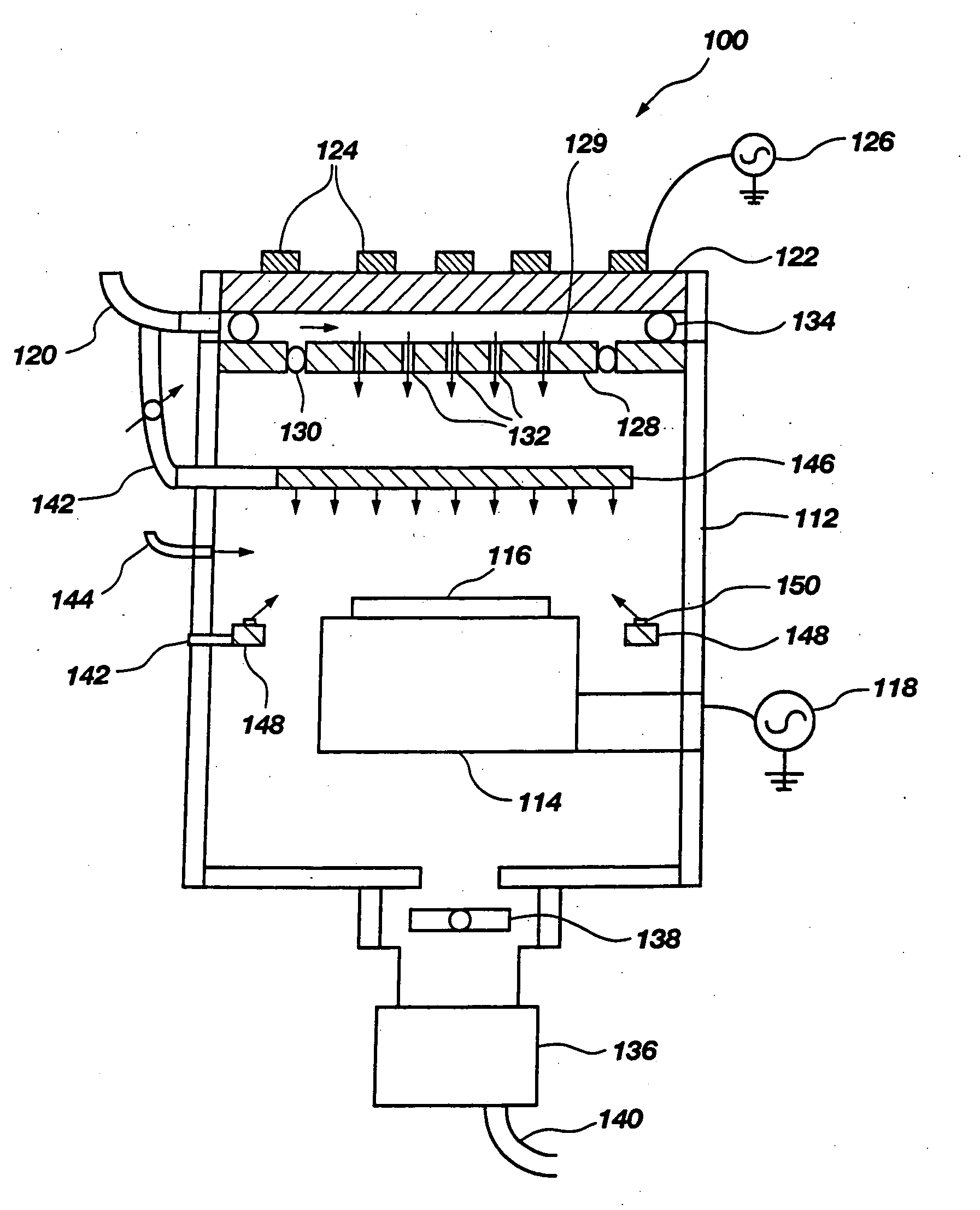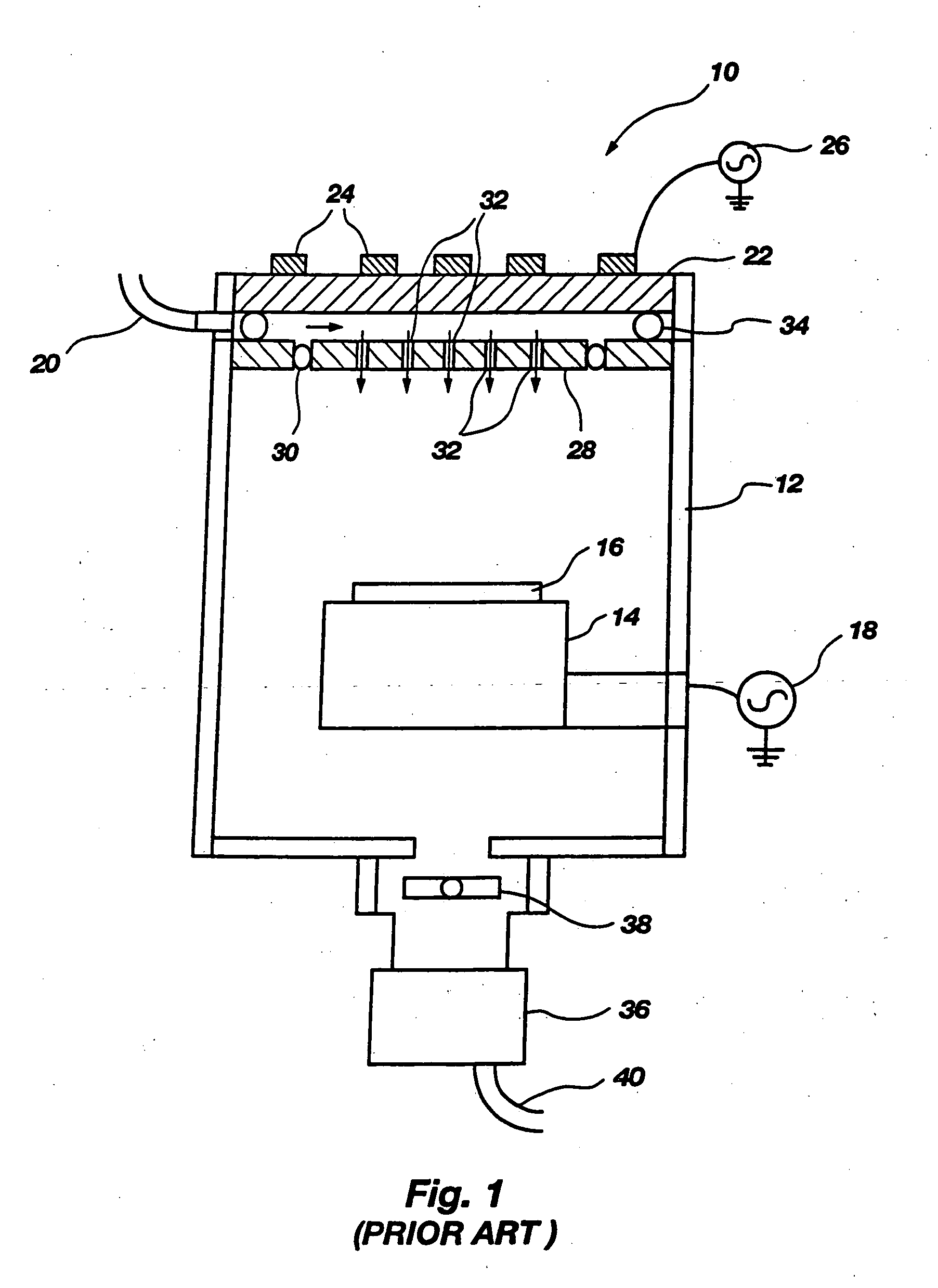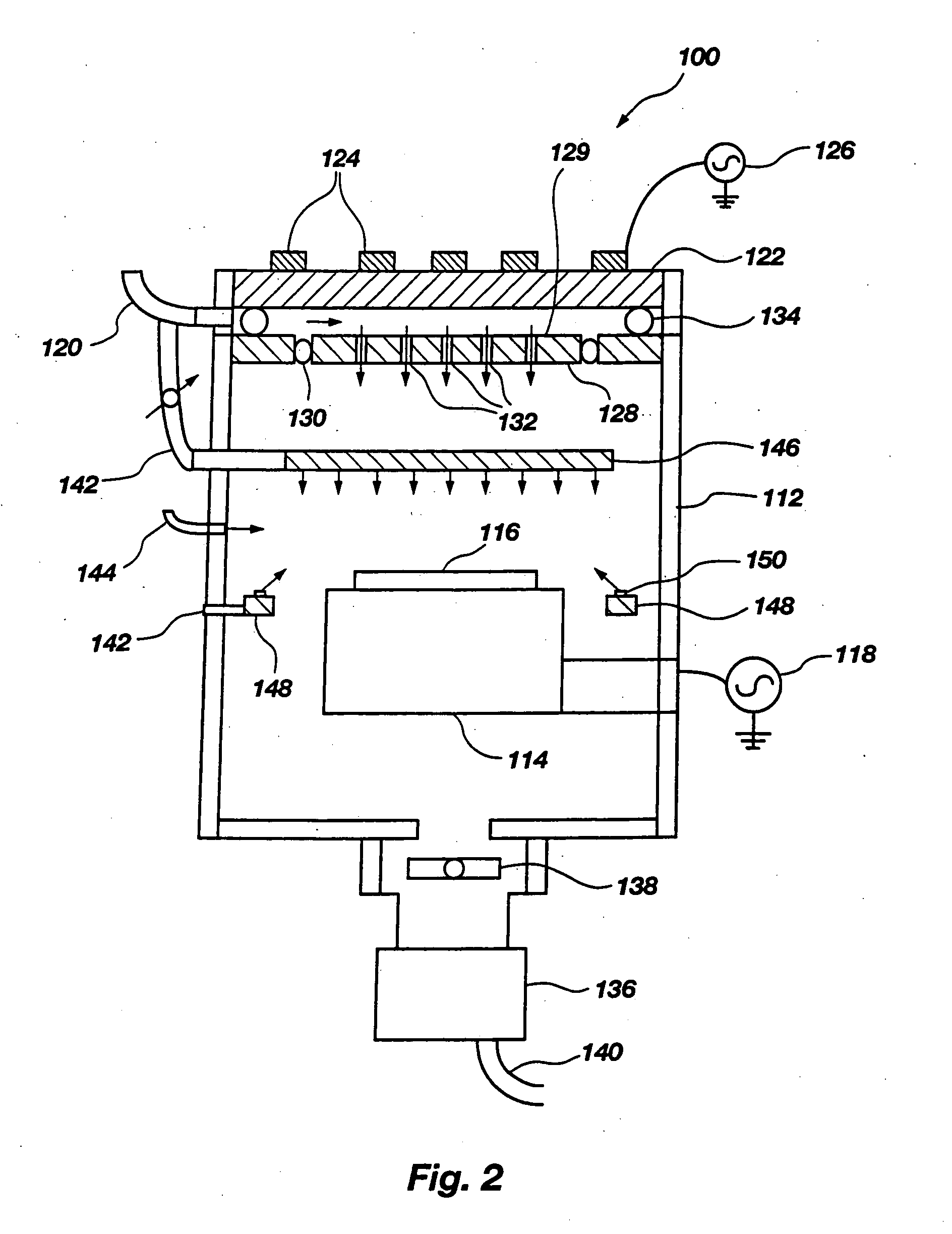Method for controlling the temperature of a gas distribution plate in a process reactor
a technology of process reactor and temperature control, which is applied in the direction of coatings, chemical vapor deposition coatings, electric discharge tubes, etc., can solve the problems of difficult control of plate temperature and gas temperature, control of temperature, and inability to easily modify the temperature of the gas distribution plate b>28/b>, so as to improve the efficiency of semiconductor processing and reactor cleaning, and the temperature of the gas distribution plate can be increased
- Summary
- Abstract
- Description
- Claims
- Application Information
AI Technical Summary
Benefits of technology
Problems solved by technology
Method used
Image
Examples
Embodiment Construction
[0014] A high density plasma process reactor 100 is depicted in the schematic diagram of FIG. 2. The reactor may have multiple plasma sources where one source is for etching layers in a semiconductor substrate while the other source is for depositing a polymer. Reactor 100 is a low pressure reactor that operates at or below 50 milliTorr. Low pressure reactors are desired as they avoid microscopic loading, where features of the same size etch more slowly in dense patterns than in sparse patterns. The reactor 100 has separate controls for top and bottom power. The top power is for energizing high density plasma sources and the bottom power or bias source is for directing the plasma for etching and for directing a polymer for depositing. The high density plasma process reactor 100 is modeled after an LAM 9100 TCP (transferred coupled plasma) etcher and an Applied Materials HDP 5300. High density plasma is defined as plasma having an ion density greater than 1×1010 per centimeter3 in a ...
PUM
| Property | Measurement | Unit |
|---|---|---|
| temperature | aaaaa | aaaaa |
| pressure | aaaaa | aaaaa |
| temperature | aaaaa | aaaaa |
Abstract
Description
Claims
Application Information
 Login to View More
Login to View More - R&D
- Intellectual Property
- Life Sciences
- Materials
- Tech Scout
- Unparalleled Data Quality
- Higher Quality Content
- 60% Fewer Hallucinations
Browse by: Latest US Patents, China's latest patents, Technical Efficacy Thesaurus, Application Domain, Technology Topic, Popular Technical Reports.
© 2025 PatSnap. All rights reserved.Legal|Privacy policy|Modern Slavery Act Transparency Statement|Sitemap|About US| Contact US: help@patsnap.com



